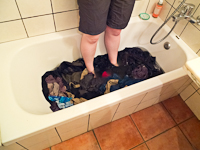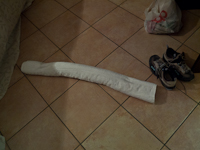Psycho Ladies Safety Bicycle
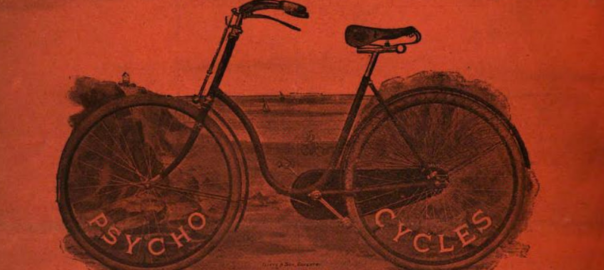
I’m finishing up my first historical romance and starting to draft the second in the series, which means I am back into research mode. Book two’s heroine is a cyclist, so I’ve been trying to figure out what she might be wearing — the 1890s is still a period of upheaval in ladies’ fashion, as corsets disappear and “rational dress” appears, and the advent of women’s bicycles leads to debate on where and when it is appropriate for women to wear knickerbockers or should they be riding bikes with drop frames, with nothing for their skirts to get involved in…
Anyway, I was reading an opinion letter in an 1890s magazine and the lady writing mentioned that she and her sisters have all ended up riding the Psycho Ladies’ Safety.
“Safety” is the “safety bicycle” but Psycho Ladies? Really?
Yes, really! Imported from England in 1888 and after, the ladies’ safety bicycle from the Psycho line, manufactured by the Storley Bros. was one of the first ladies’ bikes available in the United States. A search in Google Books brings up two pages of mentions in the late 1880s and 1890s of the Psycho ladies’ safety. For instance, at the Massachusetts Charitable Mechanic Association’s seventeenth triennial exhibition in 1890, W.W. Stall of Boston won a silver medal in the category of “Agricultural Implements and products, carriages, wagons, bicycles, and other vehicles and appliances” with “Bicycles and appurtenances, including New Star Combination Drop-Frame Psycho, Ladies’ Light Roadster Psycho, Ladies’ Extra Light Roadster, Double-Frame Psycho, Coventry Rival Safety, Tremont Safety, Elliott Safety, and others.”
Psycho Ladies’ Safety Bicycle
Sorry, I have to repeat it because I’m so excited that it existed with that name.
Obviously, “psycho” had different connotations at the time. Etymonline tells me that it wasn’t used as a shortening for “psychopathic” until Raymond Chandler used it that way in 1936. If we look at the roots f the word, it’s the Greek term psykhe, meaning “mind, mental; spirit, unconscious.” There’s also the Greek myth of Psyche and Cupid/Eros, a variation on the Beauty and the Beast storyline, in which Psyche is married to a terrible serpent who visits her at night as a handsome man and, after she breaks some rules, she has to complete a number of quests in order to win him back and live happily ever after. I think it’s safe to say that the makers of Psycho bikes had this image in mind,

And not this.
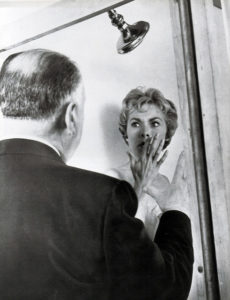
Anyway, the Psycho ladies’ bikes – and there were soon several different options – and ladies’ bikes in general were a big step forward from tricycles, which had earlier been the most accepted form of bicycle for ladies. As one article from 1891 points out, “it was surely not in reason that a presumably robust, lightly-clad man should ride the light-moving fifty-pound bicycle, while the weaker, long-skirted girl was condemned to trundle the hundred-pound tricycle.”
By 1893, manufacturing and technology had improved even on the fifty-pound bicycle option, and Iron Age‘s 1897 history of the women’s bicycle tells us that,
The combination of light steel frame perfectly elastic air tires held on a tough and springy wooden rim makes a bicycle of 25 pounds weight or less to ride which is as near like flying as woman is likely to get in our generation.
Compared to a modern bike, that sounds like, well, a modern bike. I ride a 2013 Trek 520, a steel-framed touring bike, which weighs 27 pounds. Perhaps it would be a little lighter with wooden rims on the wheels!
I still have to decide if my heroine will be riding a Psycho ladies’ safety, which had a drop frame, i.e. no top bar.
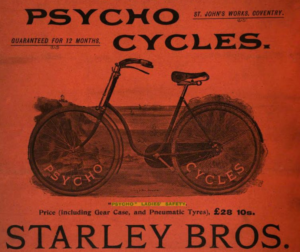
This allows it to be ridden more easily while still wearing skirts, but my heroine will be following rational dress and wearing knickerbockers. From this illustration in the novel A Study in Bloomers: Or, The Model New Woman, however, wearing bloomers, or knickerbockers, doesn’t automatically mean a female cyclist would be riding a wheel with a diamond frame.
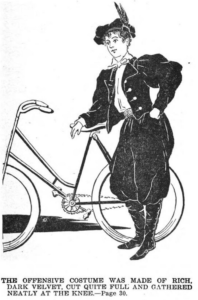
She’s wearing a velvet suit, which sounds incredibly stylish but hot for actual riding… Obviously I still have more research to do!



